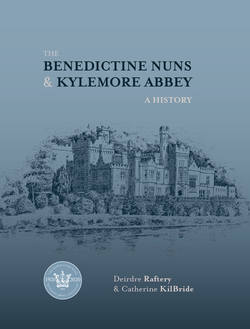Читать книгу The Benedictine Nuns and Kylemore Abbey - Deirdre Raftery - Страница 7
На сайте Литреса книга снята с продажи.
ОглавлениеGLOSSARY
Abbess/Abbot The title given to the Superior of a Benedictine abbey. Historically, once elected, a Superior served for life. The Second Vatican Council (1962–5) ruled that the Superior should serve for a fixed term of six years.
Abbey The monastery where monks live and the convent where nuns live.
Annals The daily record of the activities of a convent.
Archbishop An archbishop administers an archdiocese, which is a really large diocese. In Ireland there are four archdioceses: Armagh, Cashel, Dublin and Tuam.
Benedict St Benedict lived in sixth-century Italy (c.480–547). He founded twelve monasteries of twelve monks each. The envy of the local clergy led him to abandon that settlement and, with some disciples, he founded Monte Cassino, about eighty miles south of Rome. The Rule of St Benedict is followed by all monks and nuns who call themselves Benedictines.
Bishop A bishop oversees a diocese, which is a collection of local parishes.
Cellarer The person in a monastery responsible for provisioning and catering.
Chantress The Chantress directs the choir and composes sacred music. She has charge of the teaching of singing in the convent.
Choir sisters Nuns who are under obligation to attend all choir offices, as contrasted with lay sisters, who, though living under rule, attend only certain services. This distinction was removed after the Second Vatican Council (1962–5).
Cloister An enclosed part of a convent or monastery, which is free from entry by outsiders.
Convent A community of nuns; also, the building in which they live.
Divine Office Book of prayer, comprising psalms, hymns and lessons, recited or sung daily in choir by professed religious; it is composed of eight hours (Matins, Lauds, Prime, Terce, Sext, None, Vespers, Compline).
Enclosure Rule of cloistered orders of nuns by which they live always within the convent and do not go into the outside world, except in special cases provided for by Canon Law.
Habit Distinctive clothing worn by members of a religious order.
Infirmarian The Infirmarian is trained to serve as pharmacist and physician to the convent.
Lay sisters Members of a religious institute of women who are not bound by choir duty. Their role is to serve the physical and temporal needs of the community. The distinction between lay sisters and choir sisters was removed after the Second Vatican Council (1962–5).
Lectio divina Literally ‘divine reading’, lectio divina is an ancient way of reading and praying with the Bible. It has a place of honour in monastic life generally and especially among the practices of Benedictine life.
Novice Person formally received into a religious community to serve a period of formation that determines fitness for profession.
Novitiate Term used to refer to both the building in which novices live separated from the professed religious and the time of probation spent under the direction of a Mistress of Novices before a novice is admitted to religious profession.
Nun Female member of a religious order who has taken solemn vows. The term refers to women religious who have entered contemplative life. Though distinct from ‘Sister’, the terms are now commonly used interchangeably.
Postulant Candidate for admission to a religious community who serves a probationary period before being admitted to the novitiate.
Prioress After her election, the Abbess appoints a Prioress as her deputy.
Profession Act of embracing religious life, generally by taking vows of Poverty, Chastity and Obedience according to the Rule of the religious order. Benedictines take vows of Stability, Conversion of Manners and Obedience.
Reception Ceremony, sometimes referred to as Clothing Ceremony, at which a postulant is officially received into a religious order as a novice.
VLA Venerable Lady Abbess, historical title of the Superior of a Benedictine community of nuns.
